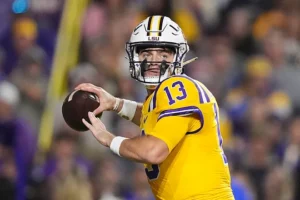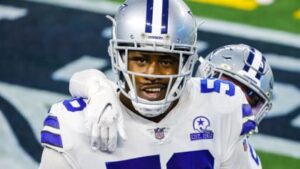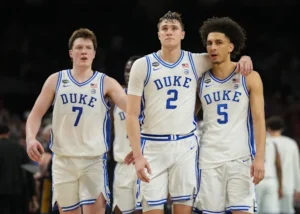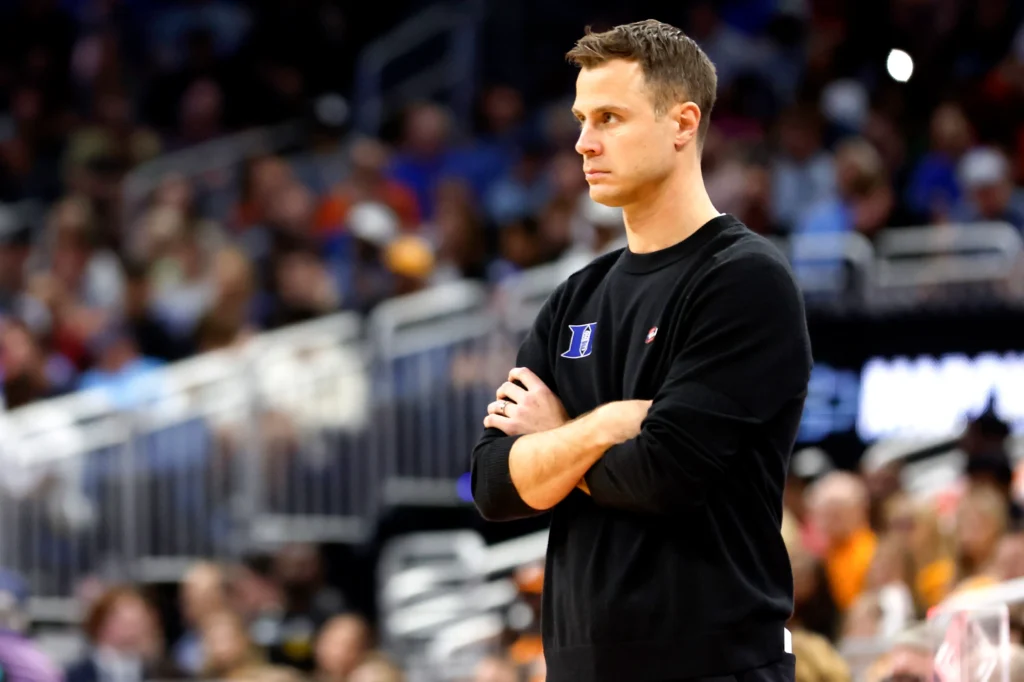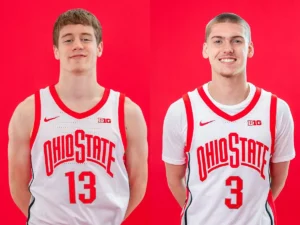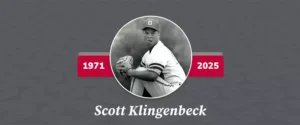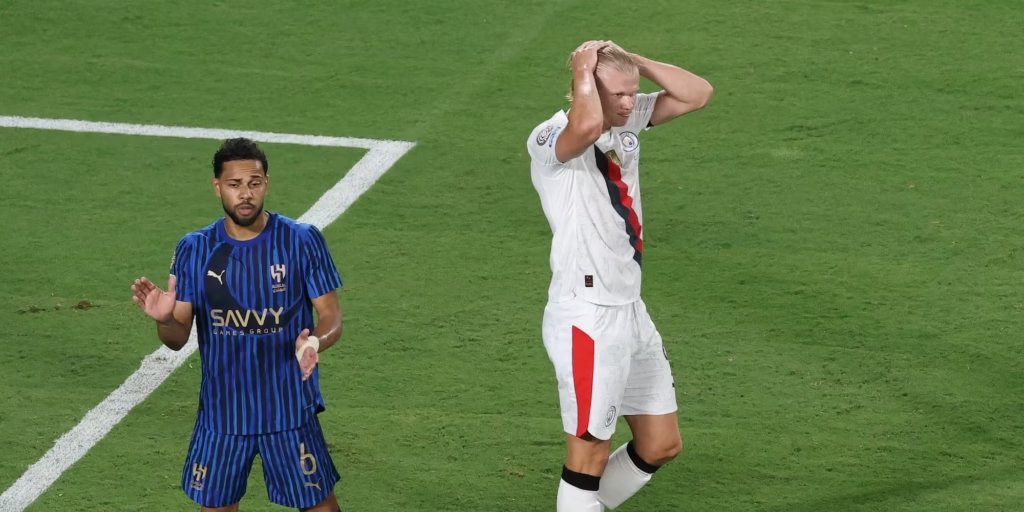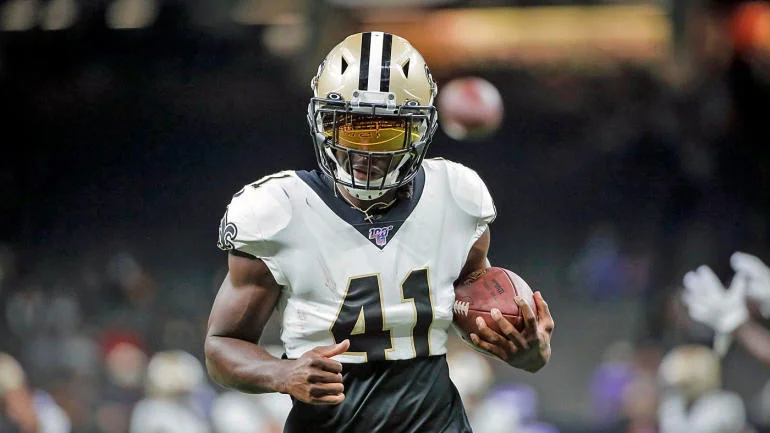
As the 2025 NFL offseason stretches into summer, the buzz surrounding potential blockbuster trades has reached a fever pitch. With free agency largely concluded and training camps on the horizon, front offices are finalizing rosters, scouting positions of need, and working the phones behind the scenes. The summer trade market, once a quiet corner of the league calendar, has evolved into a high-stakes game of leverage, cap management, and strategic reshuffling. Among the most discussed possibilities is a league-shaking deal: Alvin Kamara to the Denver Broncos. But Kamara is far from the only name circulating in insider circles. From dominant defensive linemen to veteran running backs and high-profile wide receivers, the NFL appears poised for a wave of significant movement before camps open.
The idea of Alvin Kamara in a Broncos uniform would have seemed implausible a few years ago. The New Orleans Saints’ do-it-all running back has long been one of the league’s most dynamic offensive threats, combining elite vision with pass-catching ability and explosiveness in open space. However, circumstances have shifted in New Orleans. With a franchise entering a mini-rebuild, salary cap gymnastics becoming more difficult each season, and Kamara’s own contract beginning to weigh on the books, the Saints may be ready to listen. The Broncos, meanwhile, are in the middle of their own identity search. With their quarterback situation still unsettled, a young but inconsistent offensive line, and a wide receiver group that has underwhelmed in recent seasons, Denver needs a reliable, game-breaking piece to stabilize their offense. Kamara offers just that. His ability to line up anywhere on the field, shoulder a heavy workload, and serve as a security blanket for whoever is under center would immediately raise the Broncos’ offensive ceiling. Paired with Javonte Williams, Kamara could allow Denver to shift between power and finesse in the backfield, controlling tempo and offering multiple looks to opposing defenses.
For a trade to happen, the Broncos would likely need to part with a combination of draft capital and either a young player or a rotational starter. The Saints would benefit from the salary cap relief, while the Broncos would be betting on a win-now strategy in a competitive AFC West. It’s a high-risk, high-reward scenario, but one that makes sense for both sides given their current trajectories.
Kamara may be the headliner, but other notable names are also drawing trade interest across the league. Myles Garrett, the Cleveland Browns’ superstar pass rusher, has reportedly drawn inquiries despite being one of the league’s most dominant defensive players. While the Browns remain committed to contending, their salary cap situation is tight, and moving a top asset like Garrett—while unlikely—could open up options for roster flexibility. Teams like the Minnesota Vikings, with ample draft capital and a need for a game-changing edge rusher, could be in the mix. The cost would be immense, likely involving multiple first-round picks, but Garrett’s impact on a defense is virtually unmatched.
Aaron Donald, the future Hall of Famer and cornerstone of the Los Angeles Rams defense, has also surfaced in trade rumors. Though still playing at an elite level, Donald is approaching his mid-thirties and carries a hefty contract. The Rams, who have been retooling over the past two seasons, may decide the time is right to cash in on their defensive anchor. Teams like the Dallas Cowboys or San Francisco 49ers, both in win-now modes and seeking interior pressure to counter modern offenses, could view Donald as the missing piece in a Super Bowl push. The price tag wouldn’t be cheap, but acquiring a proven champion and locker-room leader could justify the expenditure.
In the AFC South, the Tennessee Titans are facing their own crossroads, particularly regarding longtime star Derrick Henry. The bruising back has carried the franchise on his shoulders for years but now enters a stage of his career where longevity becomes a concern. The Titans, under new leadership and facing a youth movement, might explore trade options for Henry before the start of the season. One intriguing destination could be Jacksonville, where the Jaguars are on the cusp of becoming a true contender in the conference. Henry would bring physicality and experience to an offense led by Trevor Lawrence and supported by a young, ascending core. A deal involving mid-round picks and future compensation could make sense for both sides.
Another name to keep an eye on is Odell Beckham Jr., whose career has been a rollercoaster of brilliance, injury, and media spotlight. After a solid if unspectacular season in Baltimore, Beckham’s future remains murky. His name has surfaced in discussions involving the Pittsburgh Steelers and Carolina Panthers, both of whom are looking to boost their wide receiver depth around young quarterbacks. While Beckham may no longer be the electrifying force of his early years, he still commands respect as a route-runner and could thrive in a system where he isn’t asked to be the primary target. Given his current contract and age, the cost to acquire him would likely be modest—making him a low-risk, high-reward option for teams looking for a veteran presence.
These proposed deals are not just speculative—they are reflections of how the NFL has evolved. No longer content to wait for the trade deadline or quietly retool during the offseason, teams are now viewing summer trades as a critical juncture in their strategic planning. The rise of analytics-driven front offices, the prevalence of cap-savvy general managers, and the constant pressure to contend have transformed the trade market into a year-round chess match. Draft picks remain the gold standard of trade currency, but proven veterans with manageable contracts are becoming increasingly valuable in a league where windows of opportunity close quickly.
Beyond the immediate on-field implications, these trades would also send powerful messages to locker rooms and fan bases. Acquiring a player like Kamara or Donald signals ambition—a willingness to invest in greatness rather than settle for mediocrity. For fans, it offers renewed excitement and a sense of momentum heading into the season. For players, it shows organizational commitment to winning, which can galvanize morale and increase buy-in during the grind of the season.
The psychological impact of these deals shouldn’t be underestimated. Kamara joining the Broncos, for example, would not only boost Denver’s offensive firepower but also energize a franchise that has spent the better part of a decade searching for stability. For young players, having a proven star in the locker room can accelerate development and establish a standard of excellence. For veterans, it represents a final push toward playoff success.
Of course, there are risks involved in any major trade. Injuries, chemistry issues, and regression are always lurking. For the Saints, losing Kamara would leave a void in both production and leadership. For teams acquiring older stars like Donald or Henry, the gamble is whether they have enough left in the tank to justify the investment. But in today’s NFL, where fortunes can shift dramatically over the course of a single season, those risks are often worth taking.
What we’re witnessing is a fundamental shift in how teams approach team-building. The old model—draft, develop, extend—is now being supplemented with aggressive, targeted trades designed to plug holes and supercharge competitive timelines. Whether it’s a franchise chasing its first Super Bowl or a perennial contender trying to stay ahead of the curve, the trade market has become a key battlefield in the pursuit of greatness.
As summer rolls on and training camps draw closer, expect the noise to get louder. Executives are working overtime to balance financial flexibility with competitive urgency. Coaches are evaluating how new pieces might fit into existing schemes. And fans are watching closely, hoping that one bold move could be the catalyst for a magical season. The NFL, always unpredictable, may be on the brink of a trade wave that reshapes the power structure across both conferences.
Whether Alvin Kamara ends up in Denver or another star finds a new home, one thing is clear: the NFL summer trade window is no longer a quiet period. It’s a proving ground for front offices, a stage for blockbuster moves, and a preview of the fireworks that await once the games begin. The heat of July may pale in comparison to the deals set to ignite the gridiron.
